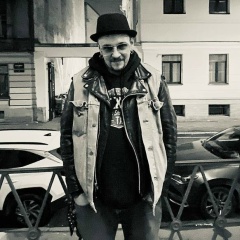Элементы хотя и легального, но бизнеса можно усмотреть в церковном ритуале, в котором монетизации не подверглось разве что только причастие. Остальная литургия оказалась расчлененной на периоды «проскомидийных», «обеденных» и «простых» записок, каждая из которых предполагает «пожертвование в виде фиксированной суммы». К литургическому ритуалу прилагается разнообразный ассортимент свечек, широкая линейка молебнов, панихид и просто хозяйственных треб, а также красивые облачения священников, которые при этом обязательно должны быть на 1-2 миллиона дешевле, чем облачения у епископа. Если же ритуал совершается этим самым нарядным епископом, то у него монетизировано каждое движение. Известна фраза предыдущего петербургского митрополита Владимира, сказанная им настоятелю одного прихода: «У вас денег не хватит, чтобы пригласить меня на службу в ваш храм». Каждый шаг архиерея имеет свою цену, что отображается в странной практике петербургского духовенства скидываться каждую неделю по пять тысяч рублей с храма «на цветы» митрополиту Варсонофию, когда тот возвращается из Москвы со своей основной должности – управляющего делами московской патриархии. Хотя в Петербурге, согласно епархиальному справочнику, 247 приходов, миллион алых роз на эти деньги вполне можно купить. Если же обойтись без цветов хотя бы три недели, то останется даже на гуманитарную помощь детям в Сирии.
Впрочем, покупку цветов или свечей можно было бы назвать внутренним делом религиозной организации (и в этом случае законным бизнесом), если бы она при этом не претендовала на коллективную собственность в виде земельных участков в парках или памятников культуры, относящихся к национальному достоянию. Длящийся третий год конфликт вокруг Исаакиевского собора объясняется всего лишь тем, что церковные иерархи видят в нем неэффективно работающий оффшор: излишняя уплата налогов, выше средних зарплаты, слишком большое количество сотрудников, когда можно обойтись бесплатно работающими экскурсоводами из числа «волонтеров» (предложение митрополита Варсонофия от 2015-го года), одной уборщицей и одним рабочим на весь объем собора, а режим работы можно сделать почти круглосуточным (как это, собственно, и происходит в нескольких православных храмах в центре города). Категоричный тон церковных иерархов и обслуживающих их воинов христовых во время споров об Исаакии свидетельствует о том, что они днем мнят себя наместниками Христа, а в остальное время губернаторами невечернего (иногда лунного) света.
При этом складывается впечатление, что Бог спит почти все время. И когда из экспозиции Русского музея в 2009-м году незаконно была изъята Торопецкая икона Божьей матери (XIV век) и передана в подмосковный коттеджный поселок, и когда в 2010-м году буквально за пять месяцев на месте захоронения блокадного пепла в Парке Победы вдруг возник нарядный храм (чем-то напоминающий загородный коттедж внезапно разбогатевшего типажа из серии «из грязи в князи»). Парк Победы является охранной зоной, где без разрешения нельзя вбить даже кол в землю. Но князьям церкви закон оказался не писан, поэтому вскоре прилегающее пространство стало обрастать различными конструкциями вроде поклонных крестов или информационных стендов со странными надписями, предостерегающими прохожих от хождения по земле, где захоронены останки жертв блокады. Люди должны были чувствовать себя виноватыми в том, что они утяжеляют собой часть территории, где поблизости возведен церковный самострой. Когда же несколько месяцев назад один из градозащитников Дмитрий Ратников направил жалобу в местные органы власти на самовольно установленные стенды вокруг церкви, настоятель храма вывесил на стенде его фотографию с припиской в стиле доноса: «Д. Ратников против поклонного креста, информационного стенда и баннеров (с информацией) о мемориальном храме». Если ситуацию описать на религиозном языке, то захватчики территории для строительства храма в Парке Победы жнут там, где не сеяли. Мемориальный комплекс с советской (а потому нерелигиозной) атрибутикой сложился при СССР. В Парке захоронены останки, принадлежавшие людям разных национальностей и религиозных/ атеистических убеждений. При создании Парка Победы в оформлении использовалась траурно-погребальная тематика, имевшая прототипом скорее эллинистическую культуру, нежели какую-либо одну этническую традицию. Поэтому претензии церковных иерархов на господствующее положение в Парке Победы в экономическом плане являются попыткой монетизировать пепел блокадников, а в гуманистическом смысле – самым худшим видом преступления, которое только может быть, мародерством. Такая специализация не была свойственна даже «браткам» из 90-х.
Впрочем, покупку цветов или свечей можно было бы назвать внутренним делом религиозной организации (и в этом случае законным бизнесом), если бы она при этом не претендовала на коллективную собственность в виде земельных участков в парках или памятников культуры, относящихся к национальному достоянию. Длящийся третий год конфликт вокруг Исаакиевского собора объясняется всего лишь тем, что церковные иерархи видят в нем неэффективно работающий оффшор: излишняя уплата налогов, выше средних зарплаты, слишком большое количество сотрудников, когда можно обойтись бесплатно работающими экскурсоводами из числа «волонтеров» (предложение митрополита Варсонофия от 2015-го года), одной уборщицей и одним рабочим на весь объем собора, а режим работы можно сделать почти круглосуточным (как это, собственно, и происходит в нескольких православных храмах в центре города). Категоричный тон церковных иерархов и обслуживающих их воинов христовых во время споров об Исаакии свидетельствует о том, что они днем мнят себя наместниками Христа, а в остальное время губернаторами невечернего (иногда лунного) света.
При этом складывается впечатление, что Бог спит почти все время. И когда из экспозиции Русского музея в 2009-м году незаконно была изъята Торопецкая икона Божьей матери (XIV век) и передана в подмосковный коттеджный поселок, и когда в 2010-м году буквально за пять месяцев на месте захоронения блокадного пепла в Парке Победы вдруг возник нарядный храм (чем-то напоминающий загородный коттедж внезапно разбогатевшего типажа из серии «из грязи в князи»). Парк Победы является охранной зоной, где без разрешения нельзя вбить даже кол в землю. Но князьям церкви закон оказался не писан, поэтому вскоре прилегающее пространство стало обрастать различными конструкциями вроде поклонных крестов или информационных стендов со странными надписями, предостерегающими прохожих от хождения по земле, где захоронены останки жертв блокады. Люди должны были чувствовать себя виноватыми в том, что они утяжеляют собой часть территории, где поблизости возведен церковный самострой. Когда же несколько месяцев назад один из градозащитников Дмитрий Ратников направил жалобу в местные органы власти на самовольно установленные стенды вокруг церкви, настоятель храма вывесил на стенде его фотографию с припиской в стиле доноса: «Д. Ратников против поклонного креста, информационного стенда и баннеров (с информацией) о мемориальном храме». Если ситуацию описать на религиозном языке, то захватчики территории для строительства храма в Парке Победы жнут там, где не сеяли. Мемориальный комплекс с советской (а потому нерелигиозной) атрибутикой сложился при СССР. В Парке захоронены останки, принадлежавшие людям разных национальностей и религиозных/ атеистических убеждений. При создании Парка Победы в оформлении использовалась траурно-погребальная тематика, имевшая прототипом скорее эллинистическую культуру, нежели какую-либо одну этническую традицию. Поэтому претензии церковных иерархов на господствующее положение в Парке Победы в экономическом плане являются попыткой монетизировать пепел блокадников, а в гуманистическом смысле – самым худшим видом преступления, которое только может быть, мародерством. Такая специализация не была свойственна даже «браткам» из 90-х.
Elements, although legal, but business can be seen in the church ritual, in which only the sacrament was not monetized. The rest of the liturgy turned out to be divided into periods of "proskomedia", "lunch" and "simple" notes, each of which assumes a "donation in the form of a fixed amount." The liturgical ritual is accompanied by a varied assortment of candles, a wide range of prayers, memorial services and just household services, as well as beautiful vestments of priests, which must be 1-2 million cheaper than the vestments of the bishop. If the ritual is performed by this most elegant bishop, then his every movement is monetized. There is a well-known phrase of the previous St. Petersburg Metropolitan Vladimir, which he said to the rector of one parish: “You don’t have enough money to invite me to serve in your church”. Each step of the bishop has its own price, which is reflected in the strange practice of the St. Petersburg clergy of throwing five thousand rubles from the church “for flowers” to Metropolitan Barsanuphius every week when he returns from Moscow from his main position - manager of the Moscow Patriarchate. Although in St. Petersburg, according to the diocesan directory, there are 247 parishes, a million scarlet roses can be bought with this money. If you do without flowers for at least three weeks, then there will even be left for humanitarian aid to children in Syria.
However, the purchase of flowers or candles could be called an internal affair of a religious organization (and in this case a legitimate business), if at the same time it did not claim collective property in the form of land in parks or cultural monuments belonging to the national treasure. The conflict around St. Isaac's Cathedral, which has lasted for the third year, is simply explained by the fact that church hierarchs see it as an inefficient offshore: excessive payment of taxes, higher than average salaries, too many employees, when you can get by with free working guides from among the "volunteers" (proposal of Metropolitan Varsonofy from 2015), one cleaner and one worker for the entire volume of the cathedral, and the working hours can be done almost round-the-clock (as it actually happens in several Orthodox churches in the city center). The categorical tone of the church hierarchs and the soldiers of Christ who serve them during the disputes about Isaac testifies to the fact that they think of themselves as viceroys of Christ during the day, and the rest of the time as governors of non-evening (sometimes moonlight) light.
This gives the impression that God sleeps almost all the time. And when the Toropetskaya icon of the Mother of God (XIV century) was illegally withdrawn from the exposition of the Russian Museum in 2009 and transferred to a cottage village near Moscow, and when in 2010, literally in five months at the burial site of the blockade ash in Victory Park, suddenly appeared an elegant temple (somewhat reminiscent of a country cottage of a suddenly rich type from the "rags to riches" series). Victory Park is a security zone, where you cannot even drive a stake into the ground without permission. But the princes of the church did not write the law, so soon the adjacent space began to grow overgrown with various structures such as worship crosses or information stands with strange inscriptions warning passers-by against walking on the ground where the remains of the victims of the blockade are buried. People should have felt guilty that they burden with themselves a part of the territory where a church squat was built nearby. When a few months ago one of the city rights activists Dmitry Ratnikov sent a complaint to the local authorities about the unauthorized stands around the church, the rector of the church posted his photo on the stand with a note in the style of denunciation: “D. Ratnikov against the worship cross, an information stand and banners (with information) about the memorial church. " If you describe the situation in religious language, then the invaders of the territory for the construction of the temple in Victory Park are reaping where they did not sow. The memorial complex with Soviet (and therefore non-religious) attributes was formed under the USSR. Remains of people of different nationalities and religious / atheistic beliefs are buried in the Park. During the creation of the Victory Park, a mourning and funeral theme was used in the design, which had a prototype of the Hellenistic culture rather than any one ethnic tradition. Therefore, the claims of church hierarchs to a dominant position in Victory Park in economic terms are an attempt to monetize the ashes of the blockade, and in a humanistic sense, the worst type of crime that can be, looting. This kind of specialization was not peculiar even to the "brothers" from the 90s.
However, the purchase of flowers or candles could be called an internal affair of a religious organization (and in this case a legitimate business), if at the same time it did not claim collective property in the form of land in parks or cultural monuments belonging to the national treasure. The conflict around St. Isaac's Cathedral, which has lasted for the third year, is simply explained by the fact that church hierarchs see it as an inefficient offshore: excessive payment of taxes, higher than average salaries, too many employees, when you can get by with free working guides from among the "volunteers" (proposal of Metropolitan Varsonofy from 2015), one cleaner and one worker for the entire volume of the cathedral, and the working hours can be done almost round-the-clock (as it actually happens in several Orthodox churches in the city center). The categorical tone of the church hierarchs and the soldiers of Christ who serve them during the disputes about Isaac testifies to the fact that they think of themselves as viceroys of Christ during the day, and the rest of the time as governors of non-evening (sometimes moonlight) light.
This gives the impression that God sleeps almost all the time. And when the Toropetskaya icon of the Mother of God (XIV century) was illegally withdrawn from the exposition of the Russian Museum in 2009 and transferred to a cottage village near Moscow, and when in 2010, literally in five months at the burial site of the blockade ash in Victory Park, suddenly appeared an elegant temple (somewhat reminiscent of a country cottage of a suddenly rich type from the "rags to riches" series). Victory Park is a security zone, where you cannot even drive a stake into the ground without permission. But the princes of the church did not write the law, so soon the adjacent space began to grow overgrown with various structures such as worship crosses or information stands with strange inscriptions warning passers-by against walking on the ground where the remains of the victims of the blockade are buried. People should have felt guilty that they burden with themselves a part of the territory where a church squat was built nearby. When a few months ago one of the city rights activists Dmitry Ratnikov sent a complaint to the local authorities about the unauthorized stands around the church, the rector of the church posted his photo on the stand with a note in the style of denunciation: “D. Ratnikov against the worship cross, an information stand and banners (with information) about the memorial church. " If you describe the situation in religious language, then the invaders of the territory for the construction of the temple in Victory Park are reaping where they did not sow. The memorial complex with Soviet (and therefore non-religious) attributes was formed under the USSR. Remains of people of different nationalities and religious / atheistic beliefs are buried in the Park. During the creation of the Victory Park, a mourning and funeral theme was used in the design, which had a prototype of the Hellenistic culture rather than any one ethnic tradition. Therefore, the claims of church hierarchs to a dominant position in Victory Park in economic terms are an attempt to monetize the ashes of the blockade, and in a humanistic sense, the worst type of crime that can be, looting. This kind of specialization was not peculiar even to the "brothers" from the 90s.
У записи 7 лайков,
5 репостов,
2064 просмотров.
5 репостов,
2064 просмотров.
Эту запись оставил(а) на своей стене Максим Козырев




























